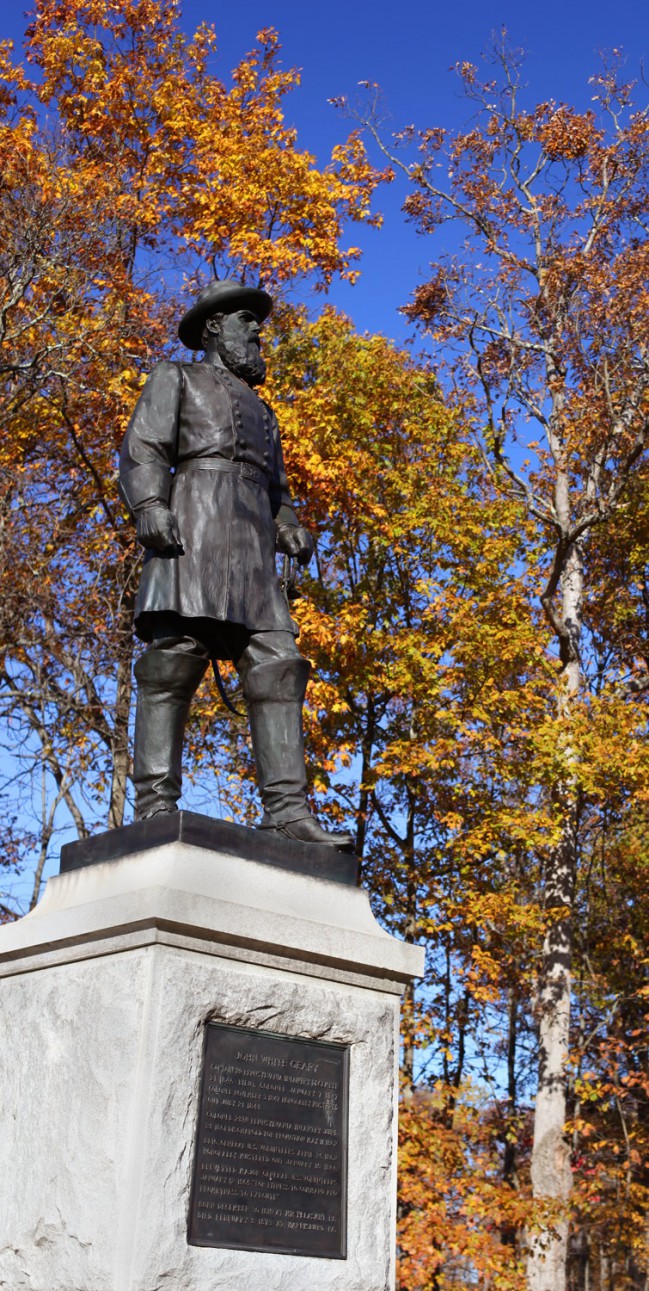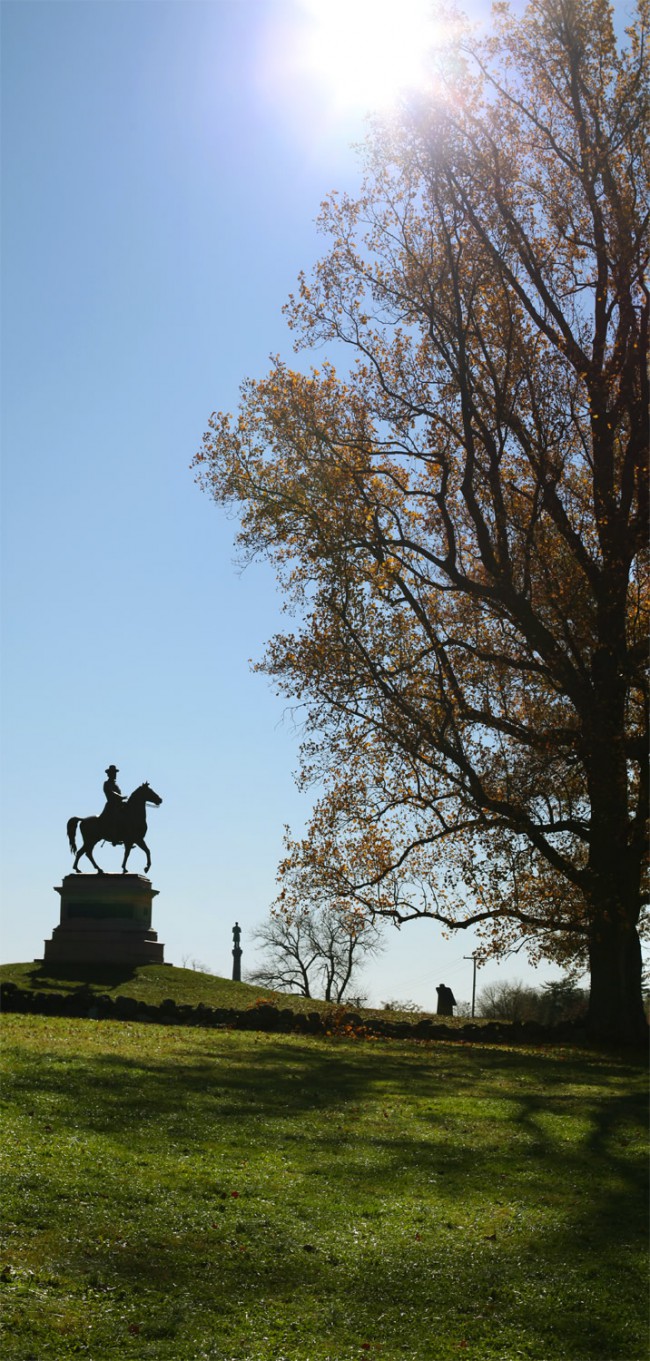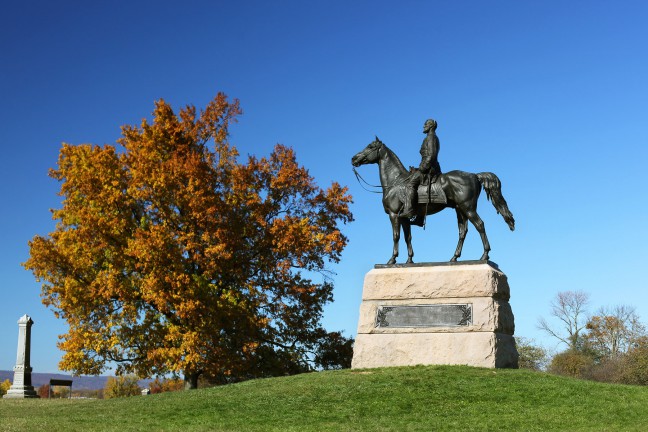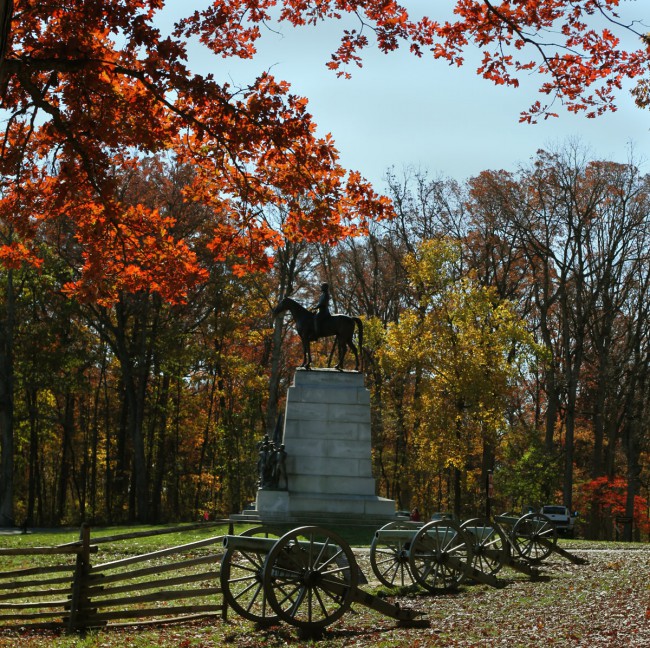With the fall leaves all but gone, my wife and I set out to Gettysburg in hopes of capturing some colorful images. We were fortunate to come across a few magnificent views of generals John W. Geary, Winfield Scott Hancock, George Meade, and Robert E. Lee.
All photos are by Dawn Manning, which she originally captured on November 5, 2011. Click any image for a higher resolution.
Brig. General John W. Geary (1819-1873)
My dad likes to describe pre-twentieth-century battles as blindfolded men with baseball bats, as they flailed around in attempt to find their opponent. On the night of July 2, Brig. General John W. Geary got lost on his way to Culp’s Hill during a major Confederate attack. With roughly 2,500 veterans under his command, the Army of the Potomac lacked that many troops for several hours. ((Edwin B. Coddington, The Gettysburg Campaign: A Study in Command (New York: Simon & Schuster, 1997), 434.)) I do not blame him though. When I first went to Gettysburg, I struggled to find Culp’s Hill in daylight with a map and a GPS device. Geary fared much better the next morning on July 3, as he commanded the right-flank of the army and his troops successfully defended the hill from a three-hour Confederate assault.
Geary is a Pennsylvania man. Prior to the war, he was mayor of San Francisco and the governor of the Kansas territory, but after the war, he moved back to Pennsylvania and became its 16th governor where he died in office.
Maj. General Winfield Scott Hancock (1824-1886)
Those who saw the film Gettysburg will recognize Maj. General Winfield Scott Hancock as the commander of the 2nd Corps, which defended the Union center against Pickett’s Charge on the third day of the battle. Yet, Hancock provided leadership from day one. Before the general arrived at the scene, the Confederates had broken Union lines north of the town. Hancock arrived at Cemetery Hill, south of Gettysburg. There, he rode on horseback from point to point, as he restored order to the Union lines and took position on Cemetery Hill and Culp’s Hill. ((Ibid., 299.))
This statue depicts Hancock calming his troops who had just lost the fight north of Gettysburg.
Like Geary, Hancock was a Pennsylvania man. After the war, he ran on the Democrat ticket against James A. Garfield (1831-1881) in the 1880 presidential election. He lost.
Maj. General George Meade (1815-1872)
Three days before the Battle of Gettysburg, Maj. General George Meade became the commander of the Army of the Potomac. Like his predecessors, he served in its ranks as a corps commander. As such, his first council of war on the second night of Gettysburg ran like a committee, as he allowed his former peers to run much of the discussion. Meade appeared to accept his officers’ vote to stay for another day instead of issuing the orders himself.
However, after the meeting, Meade told Brig. General John Gibbon, “If Lee attacks tomorrow, it will be in your front.” ((Recollection of John Gibbon quoted into Stephen W. Sears, Gettysburg (Boston: Houghton Mifflin Company, 2003), 345.)) Gibbon commanded the 2nd Division under Hancock’s 2nd Corps, which resided at the Union center. Foresight, anyone?
General Robert E. Lee
The man who invaded Pennsylvania hardly needs an introduction to most Americans.
Recommended Reading
Coddington, Edwin B. The Gettysburg Campaign: A Study in Command. New York: Simon & Schuster, 1997.
Sears, Stephen W. Gettysburg. Boston: Houghton Mifflin Company, 2003.




